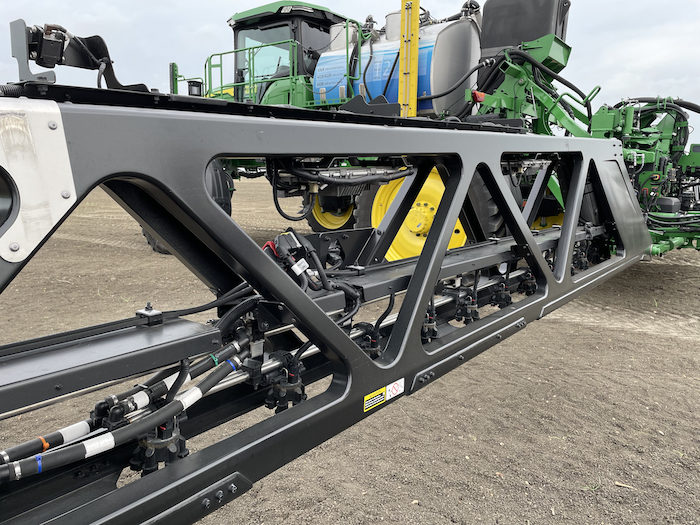Farming is a profession steeped in traditions — we learn how to work the land, care for crops and run operations from our fathers and grandfathers. Some of those traditions remain today, such as learning how to be adaptable to a range of weather and soil conditions. While many of our traditions related to crop knowledge and work ethic remain, many of our day-today practices are changing and many of those changes result in a safer, more productive farming environment.
Farmer health and safety is a part of more conversations than ever, and the latest agriculture and equipment technology offers new levels of not just productivity and efficiency but safety, too, through real-time communication and data.
Protect People & Equipment with Connected Machines
Believe it or not, today’s most common operator safety elements — seat belts, rollbars, you name it — were once considered innovative developments that have since helped save countless lives. Today, the frontlines of innovative operator safety are driven by technology.
Take for example the installation of a module telematics gateway (MTG) in farm equipment. This tool shows where operators are and what work they are doing — real-time geolocation data that can save lives during emergencies where seconds and minutes of response time can make all the difference.
Similarly, remote machine monitoring provides farmers a world of information about how equipment is being used, through the use of geo-fencing, machine operating-time monitoring and preventative maintenance alerts.
When fully dialed in, MTG software can send automatic alerts for common mistakes like when an operator leaves a seat while the rotor is running or when the combine is still in gear. This information, monitored by a connected support team and relayed to the farmer, can help correct dangerous habits and promote safe practices.
Serving as the digital bridge connecting the field, the machine and the operators, GPS systems can even take the guesswork — and thus, much of the risk — out of terrain hazards. Automated tracking and tractor management capabilities offer advanced control over tractor performance in the field, helping operators do everything from avoiding steep turns with heavy loads to recognizing and steering around trouble spots in the field. The computer display inside the cab can demystify environmental dangers while simultaneously boosting efficiency. Talk about a win-win.
Reduce Mental Strain Through Automation
In recent years, there has been much attention on the topic of mental health in the agriculture industry. Research shows that decision fatigue, frustration and confusion can all increase the production of cortisol, the stress hormone. Altogether, it’s an understatement to say farming is a stressful occupation. But just like the benefits they hold for physical safety, emerging ag and equipment technology can be used to protect a grower's mental health, too.
During fieldwork, technology can reduce strain by minimizing the decision-making burden on operators. Turn automation and auto-trac systems are tools that can mitigate the risk of making impulsive decisions and alleviate decision fatigue. Moreover, these technologies streamline operations and reduce physical fatigue by minimizing the steps required during field turns.
Another easy automation tool is machine health monitoring. Preventative maintenance systems can alert an operator to signs of a machine problem before it arises. Just like dashboard warnings in a car, this proactive communication can prevent unexpected downtime and all the stress that comes with it when time is of the utmost importance.
Technology allows farmers to upload last year’s field data or even data from several years ago. Advanced features that pre-fill displays can also aid operators who may struggle with understanding work details, work locations, or language barriers, enhancing their sense of control. By uploading this information, farmers can cross-reference old and current agronomic information to develop and improve field plans. Plus, centralizing all the fieldwork data allows for easy planning, analysis, and reporting.
Understanding real-time data about everything from input costs to remaining acres for baling and impending rainstorms can alleviate anxiety and provide control over an operation. As we reflect on the significance of Farm Safety Week, we can be optimistic as we enter a new era of enhanced safety and mental health consciousness. The way we farm is certainly not the way our fathers did. But in a profession that only continues to get more challenging and complex, today’s technology, designed to make things easier, is a beacon of a bright future. By embracing connected machines, automatic alerts and automation, we pave the way for safer, more resilient, and more sustainable agricultural practices for generations to come.






